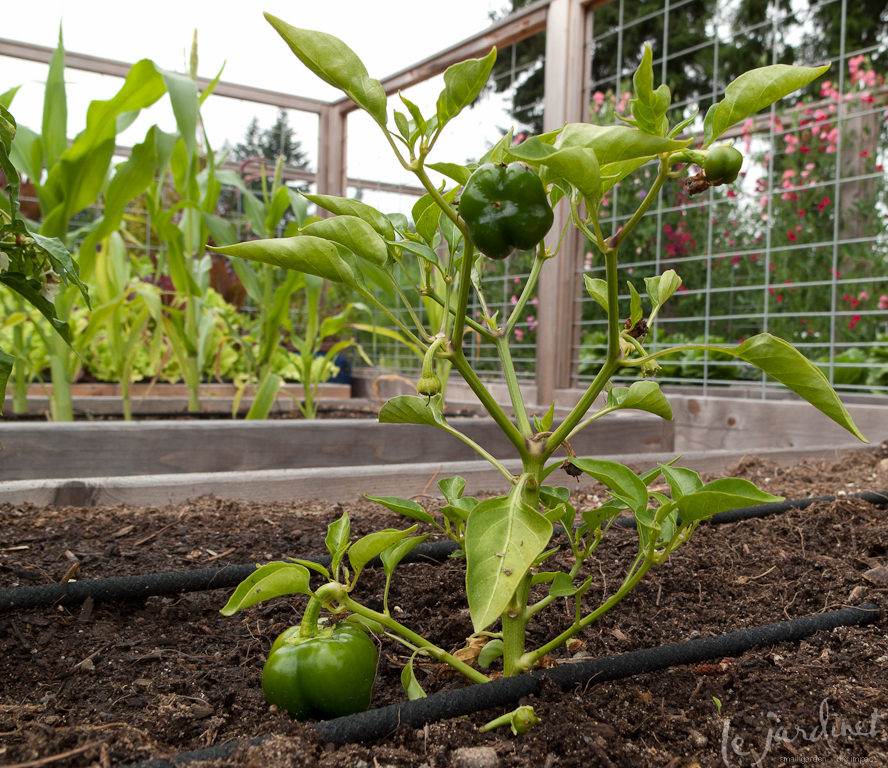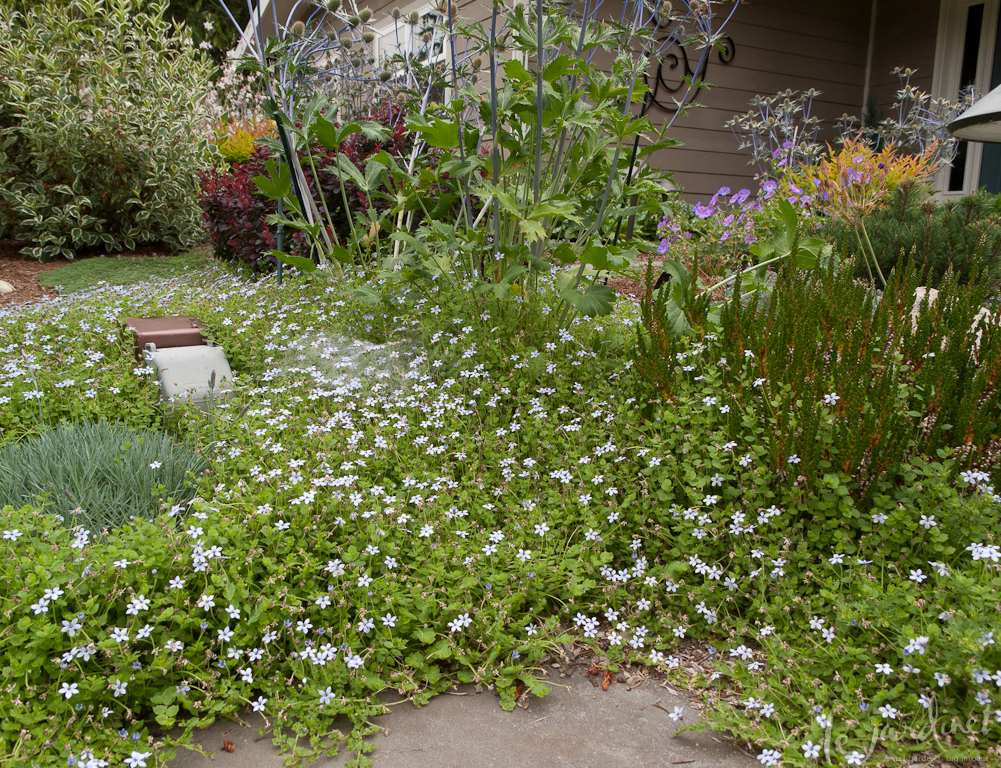Garden Oops – The Outakes
I prefer you to think that I know what I’m doing and that I don’t make major gardening faux pas. Sadly that is not entirely true although the two facts are related. You see I make lots of mistakes then learn what went wrong and how to avoid them next time round!
So in the interest of full disclosure here are some of the 2013 embarrassing garden moments.
All mulches are not equal
Now this really is not such a revelation. I know this and teach others this. But…………I fell for the advertising.
There is a popular product available locally called Fertil-Mulch, available from De Jong Sawdust and Shaving in Redmond, WA. It is a wood-based mulch composed of sawdust or shavings mixed with high-nitrogen organic matter (chicken manure) and then composted. It is a fabulous alternative to bark mulches on shrub and tree borders and is also popular on perennial beds but is best alternated with regular compost there. You probably have something very similar available where you live.
So what did I do wrong? I used it in my vegetable garden. It was recommended as being a great winter weed suppressant for this very purpose, the idea being that you dug it in in spring. I did all that. The result was that my corn and squash now look like golden leaved varieties they are so chlorotic. My peppers, beets and leeks are stunted and the annual flowers I had such high hopes for as cut blooms either gave up or have just sat there – with yellow leaves. Thankfully an experienced vegetable gardener visited recently and recognized the problem – the carbon content from the wood is too high so the nitrogen is being pulled from the mix to break it down, thereby depleting the availability of the nitrogen for healthy leafy growth.
The remedy? I’m doing everything I can think of to boost the nitrogen content with organic products such as Moo Poo tea (a foliar feed or watering solution of 'tea' based on dairy manure which won’t burn the leaves), watering with fish emulsion and lightly side dressing with bat guano. I had already given a side dressing of my regular E.B. Stone tomato and vegetable fertilizer. I may be too late or knowing my luck I’ll kill the crops with kindness! The corn does seem to be greening up though. Can’t say the same for the squash. When the crops are harvested I’ll dig in lots of well-rotted manure so hopefully I’ll do better next year. I’ll also use alfalfa at planting time and correct the pH with lime as needed.
Some flowers fade
We’re familiar with summer hydrangeas fading to a soft dusky hue – they’re supposed to and it’s part of their charm. I’ve been disappointed with a few other flowers and foliage this summer though, especially since they were recommended for full sun.
My biggest disappointment is the dwarf orange dahlia I chose for an equally bright orange pot. The color echo was vibrant – exactly what I needed.
Just two weeks later and the flowers are more of a sickly yellow-orange. I guess some dahlias fade in full sun.
The other surprise was the chartreuse annual Limelight licorice plant (Helichrysum petiolare) . This was recommended for my full sun border because it is drought tolerant, deer resistant and covers a large area. Well the deer and drought tolerance are right but the color quickly faded to almost white – in a nasty way and the edges are crisp and sunburned.

NOT the look I was going for! Limelight licorice plant is definitely NOT limelight worthy in full sun.
Many chartreuse or gold foliage plants can get sunburned in full sun e.g. Sundance Mexican orange blossom (Choisya ternata ‘Sundance’), lime heuchera and many golden conifers but this little annual wasn't touted by the growers as being only suitable for part shade. False advertising? Maybe not since in all fairness perhaps they did well in their test gardens; just not in mine.
Ground covers cover the ground
…and any other plants in the way.
My husband has become far more interested in the garden since we moved to this 5 acre property a few years ago. He loves designing and building structures, working in (or preferably eating from) the vegetable garden and mowing the grass. Actually he doesn't love the latter but he does it anyway.
So when he mentioned that he’d like blue star creeper (Pratia pedunculata) in the front garden I readily agreed. I had planted it in our last garden and it looked so pretty. I was suffering from short term memory loss obviously! It has swallowed the elfin thyme, Dianthus and heathers and is now on a mission to cover the path. Oops.
Pretty birds in the vegetable garden aren't always a good thing
We can see the vegetable garden from the office window and love to see the finches and other small birds pecking at the sunflowers. That’s one of the reasons we planted them. Then the robins swoop down and enjoy a slug fest. Or at least that’s what I assumed they were doing although I did think it strange that all the slugs were in the back bed – where the blueberry bushes are.
You’ve guessed it; they’ve eaten all but 10 blueberries from a 30’ border of bushes. They’ve never eaten them before! Next year we’ll add netting. This year I’ll have to just enjoy the fall foliage.
What lessons have you learned this year – and will admit to?







I love the honesty in this post. I remember the first time I had a "behind the scenes" look at a nursery, I was shocked that they had a lot of dead plants in the back. I had a fairy tale idea of nurseries and landscape designers. Life with plants is science, art, and a bit of luck.
Yes working in a nursery for several years removed my blinkers too!
What a fabulous post! I always forget to share my "garden outakes", but it's such a great way to pass on what we've learned with others…and makes for a great story.
Gardens are a real leveler, at least unless you have lots of $$ to quickly disguise errors! For the rest of us our dirty gardening laundry is out for the world to see. A sense of humor helps 🙂
Karen: I'm glad to hear that these things happen to other gardeners, too. Last year, I used Honey Locust leaves as mulch, and they seemed to stunt my veggies and some other plants in the same way. Marsh Hay is my all-time favorite mulch! By the way, I need to update your blog link in my feed so I get your notifications. I'm going to do that now!